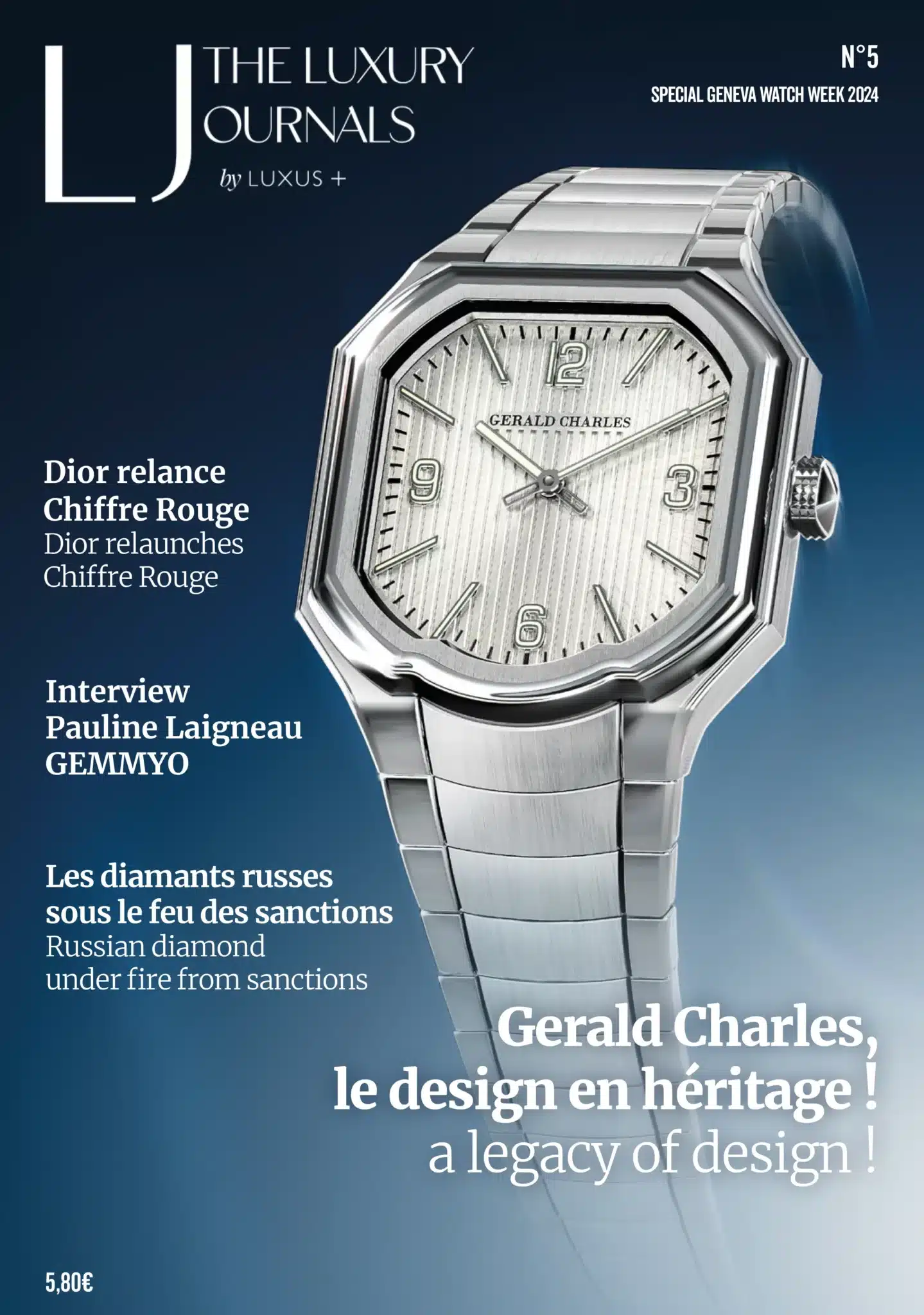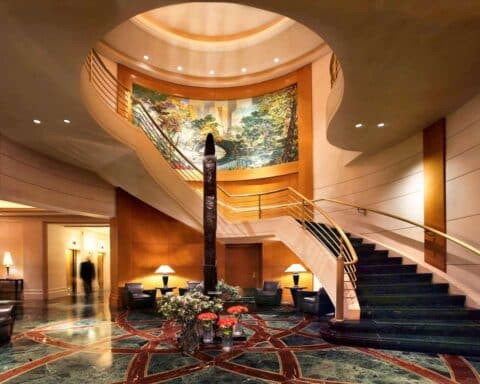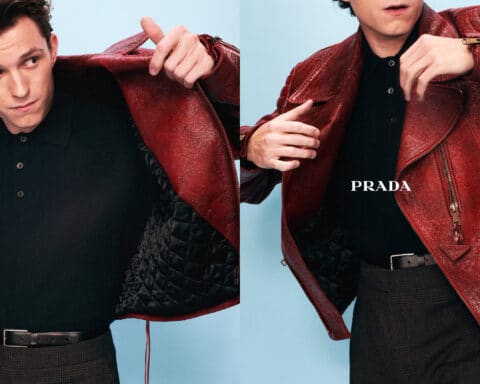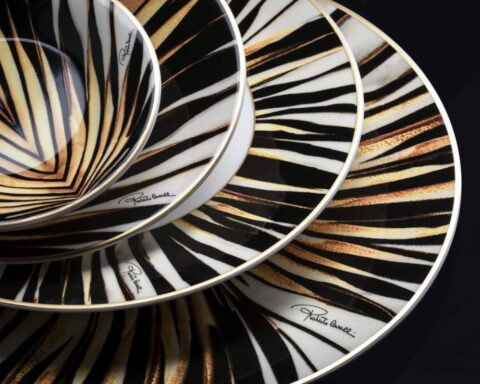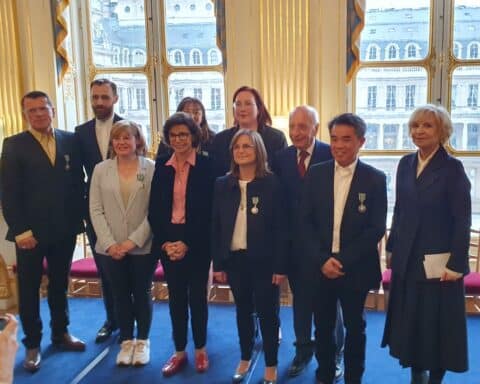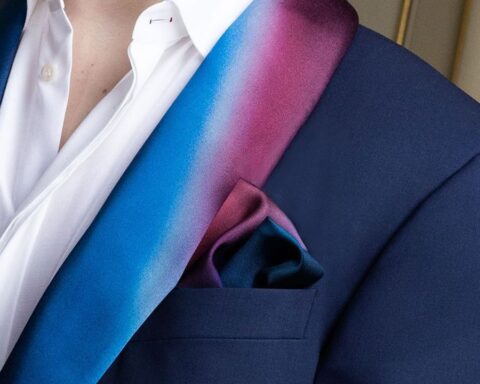[vc_row njt-role=”people-in-the-roles” njt-role-user-roles=”administrator,editor,author,armember”][vc_column][vc_column_text]
In the first part of the investigation, the context was set for Perfume as a gateway to the brand universe for an aspirational, less affluent clientele. But also as a geographic gas pedal and anti-crisis remedy for luxury brands. While uncertainty is gaining ground, the potential of the Chinese market is giving new importance to this market, to the point that many players want to challenge L’Oréal on its own ground.
According to market research firm Euromonitor International, consumers in Western Europe account for the largest share of fragrance purchases worldwide, followed by the United States and Latin America.
Focus on the Chinese market
However, if perfume is the object of desire for luxury brands, it is mainly because of the opportunities it represents in the Chinese market. A retail market estimated at 13.6 billion RMB (2 billion dollars) should grow to 30 billion RMB by 2025. Over the next five years, the market is expected to grow by 22% per year, compared to 15% between 2015 and 2020, according to Kantar. That’s three times the growth rate of the global fragrance market.
But where China has a lot of room for maneuver is in the penetration rate of fragrances in the country. For example, according to a BCG study, only 5% of Chinese wear perfume. A figure to be compared with a population estimated at 1.4 billion in 2022. For comparison, this figure is 42% in Europe and 50% in the United States.
This new craze for perfume is explained by better education of consumers on this product as well as by innovative commercial concepts.
Thus, the growth of e-commerce purchases with COVID and the development of live shopping sessions (video shopping on social networks) have contributed to strengthening the share of online sales while weakening sales in perfumeries.
Western luxury brands have grasped this growth potential. LVMH is working on opening a laboratory dedicated to beauty in China by 2023, while the luxury houses’ preferred partner, the Firmenich laboratory, has just opened a new research center in the Middle Kingdom.
With brands such as Atelier des fleurs de Chloé or Burberry, Coty hopes to double its sales in China to more than 600 million dollars by capitalizing on the Chinese people’s growing taste for prestige fragrances. Puig has also given its niche brands the first chance to set up new physical stores in 2022. In addition to opening new Penhaligon’s and L’Artisan Parfumeur outlets, the Spanish group has collaborated with the Chinese e-commerce platform Tmall to create the Scent Visualizer, a digital device that allows Internet users to visualize all the olfactory components of its fragrances.
However, national preference (Guochao) is not to be underestimated, since according to an iiMedia Research study in 2021, 74.7% of Chinese consumers favor local brands such as Florasis, To Summer and Documents.
As a confidence booster, a call to travel and the embodiment of Quiet Luxury, which is appropriate for uncertain times, perfume is at the heart of the strategy of the major brands in 2023. Although the prestige perfume market is still dominated by designer perfumes (Chanel, Dior, Paco Rabanne, etc.), niche brands are increasingly challenged. But according to some experts, this product category may be the most resilient in the beauty industry, but it could well be one of the first to fall if inflation rises and savings fall.
Read also > [Investigation] Perfume: an extension of the luxury domain (Part 2/3)
Featured photo : ©Chloé[/vc_column_text][/vc_column][/vc_row][vc_row njt-role=”not-logged-in”][vc_column][vc_column_text]
In the first part of the investigation, the context was set for Perfume as a gateway to the brand universe for an aspirational, less affluent clientele. But also as a geographic gas pedal and anti-crisis remedy for luxury brands. While uncertainty is gaining ground, the potential of the Chinese market is giving new importance to this market, to the point that many players want to challenge L’Oréal on its own ground.
According to market research firm Euromonitor International, consumers in Western Europe account for the largest share of fragrance purchases worldwide, followed by the United States and Latin America.
Focus on the Chinese market
However, if perfume is the object of desire for luxury brands, it is mainly because of the opportunities it represents in the Chinese market. A retail market estimated at 13.6 billion RMB (2 billion dollars) should grow to 30 billion RMB by 2025. Over the next five years, the market is expected to grow by 22% per year, compared to 15% between 2015 and 2020, according to Kantar. That’s three times the growth rate of the global fragrance market.
But where China has a lot of room for maneuver is in the penetration rate of fragrances in the country. For example, according to a BCG study, only 5% of Chinese wear perfume. A figure to be compared with a population estimated at 1.4 billion in 2022. For comparison, this figure is 42% in Europe and 50% in the United States.
This new craze for perfume is explained by better education of consumers on this product as well as by innovative commercial concepts.
[…][/vc_column_text][vc_cta h2=”This article is reserved for subscribers.” h2_font_container=”tag:h2|font_size:16|text_align:left” h2_use_theme_fonts=”yes” h4=”Subscribe now !” h4_font_container=”tag:h2|font_size:32|text_align:left|line_height:bas” h4_use_theme_fonts=”yes” txt_align=”center” color=”black” add_button=”right” btn_title=”I SUBSCRIBE !” btn_color=”danger” btn_size=”lg” btn_align=”center” use_custom_fonts_h2=”true” use_custom_fonts_h4=”true” btn_button_block=”true” btn_custom_onclick=”true” btn_link=”url:https%3A%2F%2Fluxus-plus.com%2Fen%2Fsubscriptions-and-newsletter-special-offer-valid-until-september-30-2020-2-2%2F”]Get unlimited access to all articles and live a new reading experience, preview contents, exclusive newsletters…
Already have an account ? Please log in.[/vc_cta][vc_column_text]Featured photo : © Chloé[/vc_column_text][/vc_column][/vc_row][vc_row njt-role=”people-in-the-roles” njt-role-user-roles=”subscriber,customer”][vc_column][vc_column_text]
In the first part of the investigation, the context was set for Perfume as a gateway to the brand universe for an aspirational, less affluent clientele. But also as a geographic gas pedal and anti-crisis remedy for luxury brands. While uncertainty is gaining ground, the potential of the Chinese market is giving new importance to this market, to the point that many players want to challenge L’Oréal on its own ground.
According to market research firm Euromonitor International, consumers in Western Europe account for the largest share of fragrance purchases worldwide, followed by the United States and Latin America.
Focus on the Chinese market
However, if perfume is the object of desire for luxury brands, it is mainly because of the opportunities it represents in the Chinese market. A retail market estimated at 13.6 billion RMB (2 billion dollars) should grow to 30 billion RMB by 2025. Over the next five years, the market is expected to grow by 22% per year, compared to 15% between 2015 and 2020, according to Kantar. That’s three times the growth rate of the global fragrance market.
But where China has a lot of room for maneuver is in the penetration rate of fragrances in the country. For example, according to a BCG study, only 5% of Chinese wear perfume. A figure to be compared with a population estimated at 1.4 billion in 2022. For comparison, this figure is 42% in Europe and 50% in the United States.
This new craze for perfume is explained by better education of consumers on this product as well as by innovative commercial concepts.
[…][/vc_column_text][vc_cta h2=”This article is reserved for subscribers.” h2_font_container=”tag:h2|font_size:16|text_align:left” h2_use_theme_fonts=”yes” h4=”Subscribe now !” h4_font_container=”tag:h2|font_size:32|text_align:left|line_height:bas” h4_use_theme_fonts=”yes” txt_align=”center” color=”black” add_button=”right” btn_title=”I SUBSCRIBE !” btn_color=”danger” btn_size=”lg” btn_align=”center” use_custom_fonts_h2=”true” use_custom_fonts_h4=”true” btn_button_block=”true” btn_custom_onclick=”true” btn_link=”url:https%3A%2F%2Fluxus-plus.com%2Fen%2Fsubscriptions-and-newsletter-special-offer-valid-until-september-30-2020-2-2%2F”]Get unlimited access to all articles and live a new reading experience, preview contents, exclusive newsletters…
Already have an account ? Please log in.[/vc_cta][vc_column_text]Featured photo : © Chloé[/vc_column_text][/vc_column][/vc_row][vc_row njt-role=”people-in-the-roles” njt-role-user-roles=”subscriber,customer”][vc_column][vc_column_text]


